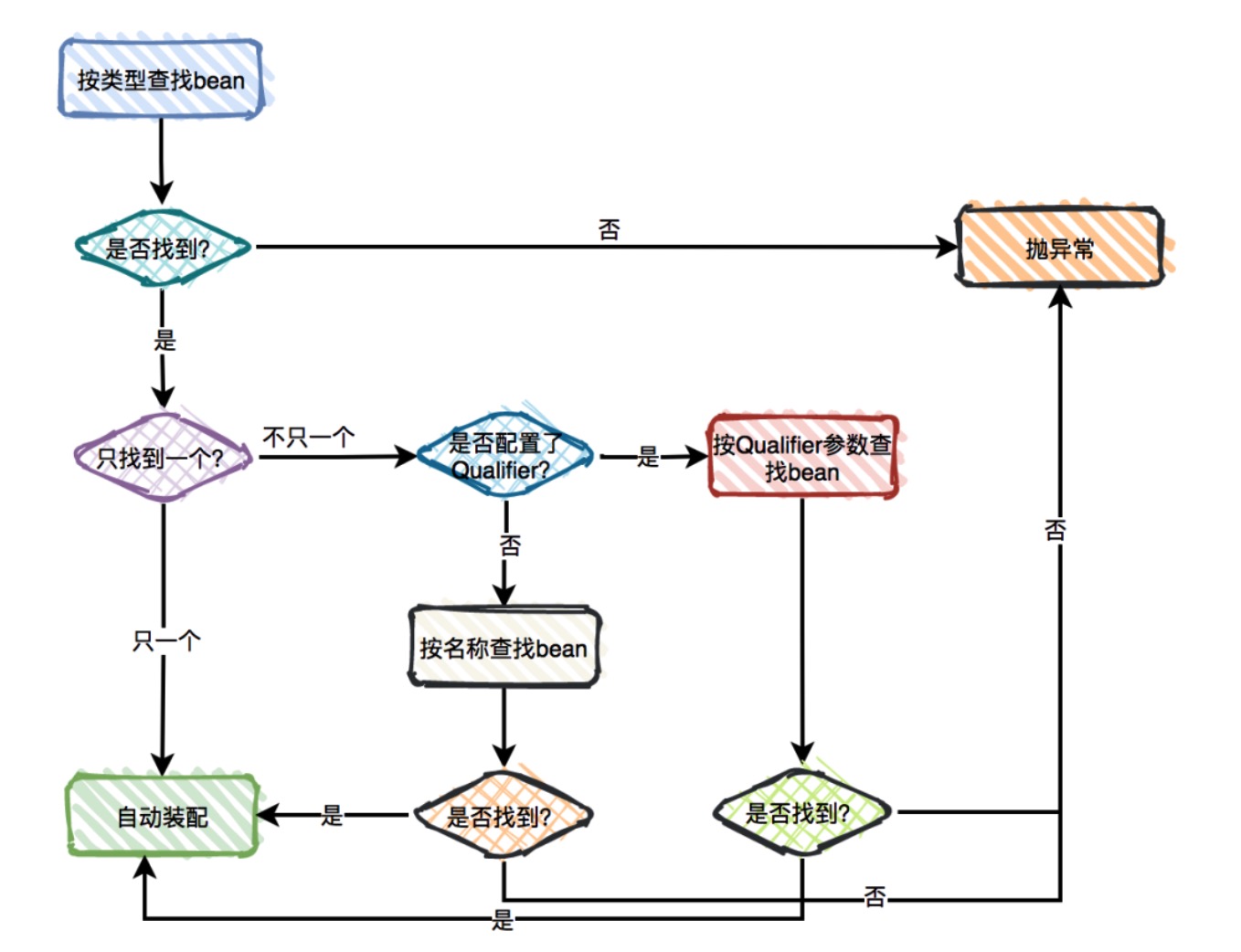水滴石穿-@Autowired和@Resouce的装配详解
本文最后更新于:May 13, 2023 pm
积土成山,风雨兴焉;积水成渊,蛟龙生焉;积善成德,而神明自得,圣心备焉。故不积跬步,无以至千里,不积小流无以成江海。齐骥一跃,不能十步,驽马十驾,功不在舍。面对悬崖峭壁,一百年也看不出一条裂缝来,但用斧凿,能进一寸进一寸,能进一尺进一尺,不断积累,飞跃必来,突破随之。
目录
首先,我们知道的是@Autowired默认按byType自动装配,而@Resource默认byName自动装配。@Autowired只包含一个参数:required,表示是否开启自动准入,默认是true。而@Resource包含七个参数,其中最重要的两个参数是:name 和 type。@Autowired如果要使用byName,需要使用@Qualifier一起配合。而@Resource如果指定了name,则用byName自动装配,如果指定了type,则用byType自动装配。
这篇文章主要记录他们具体的一个装配顺序。
准备
这里有一个接口,后面就通过装配它来进行测试:
1 | |
@Autowired
首先看一下@Autowired的装配顺序:

默认装配
默认情况下是通过byType自动装配的。先写一个实现类,如下所示:
1 | |
然后测试:
1 | |
是可以成功的。不管属性的名称是否为mapper,都可以成功运行。
多实现
然后我们再写一个实现类:
1 | |
这时,我们再去跑刚才的测试代码,是会报错的。因为现在Mapper有多个实现类了,同一类型出现了多个的情况。而且我们也没有使用@Qualifier指定名称,所以这时它会去找Bean名称为mapper的,但是没有找到,所以报错了。但是,如果我们将属性的名称改为mapperImpl或者是mapperImpl2就可以正常运行,如下:
1 | |
更换不同的属性名称,执行的方法不同,最后输出的结果不同。这就是在有多类型的情况下,自动通过Bean名称进行查找。
指定名称
使用指定名称,那么属性的名称就又可以任意了,如下:
1 | |
执行的方法也就是指定的Bean的名称中的方法。
@Resource
在上面,我们已经有了两个实现类,在此基础上完成下面的测试。
同时指定name和type
装配顺序如图:

示例:
1 | |
这里,我们指定了类型为Mapper,而且名称也必须是mapperImpl,当然了,名称也可以是mapperImpl2,根据情况而定。但是,如果指定的这两个不能唯一找到,则会报错。
指定name
装配顺序如图:

示例:
1 | |
可以正常执行,但是,如果有多个类型有相同的Bean名称为mapperImpl,则会报错。
指定type
装配顺序如图:

示例:
1 | |
因为有多个类型,会找到多个,所以这里会报错。但是,如果属性的名称和某一个Bean的名称相同,则是可以正常运行的,如下:
1 | |
不指定
装配顺序如图:

示例:
1 | |
因为没有名称为mapper的Bean,所以会报错。
如果有多个类型,有相同名称的Bean。如增加一个名称为mapperImpl的Bean:
1 | |
然后测试:
1 | |
一样的或报错,因为通过这个名称找到了多个类型。
本文作者: 墨水记忆
本文链接: https://tothefor.com/DragonOne/4c89c042.html
版权声明: 本博客所有文章除特别声明外,均采用 CC BY-SA 4.0 协议 ,转载请注明出处!
